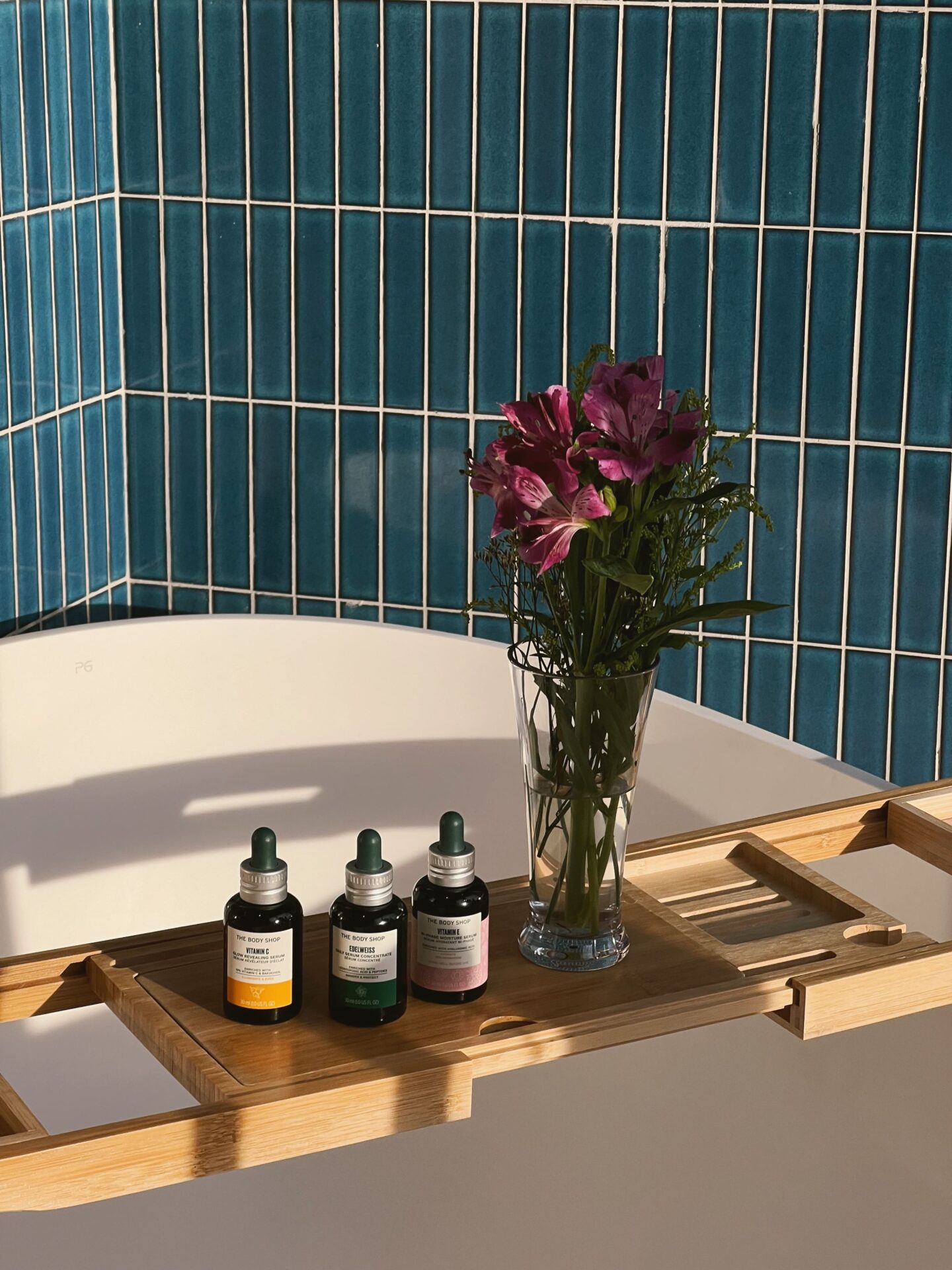In the ever-evolving skincare world, serums have become the go-to solution for targeted treatments. These lightweight, potent formulations can address many skin concerns, from hydration and brightening to anti-ageing and acne-fighting. But with so many serums on the market, a common question arises: Can serums be layered?
Can Serums Be Layered?
When I open Instagram or TikTok, it seems like every “Get Ready With Me” video features someone slathering on layer after layer of fancy skincare serums. The pressure to have an extensive skincare routine is real, and sometimes it can feel like you’re supposed to be using every serum and active ingredient under the sun for that elusive “best skin ever.” I know, cause I was also part of this trend.
It’s no surprise that people wonder if they should be layering serums. How many should you be using? What kinds can you mix? There are even “recipes” online for creating your bespoke routine by mixing various serums before applying them. At first, it might seem like a great idea. After all, there are so many high-performance skincare ingredients out there these days, why not add some of them to give your skin as many benefits as possible?
After my first brand staycation with The Body Shop Malaysia, I learnt an in-depth version of serum layering. So, the short answer is yes, serums can be layered. However, there are a few rules to ensure you’re getting the most out of your products without causing irritation or diminishing their effectiveness. Layering serums correctly can supercharge your skincare routine, allowing you to target multiple skin concerns at once.
First, What Is Serum?
A serum is a lightweight, fast-absorbing concentrated liquid applied to the skin after cleansing and right before your moisturizing routine. It is designed to deliver high concentrations of active ingredients directly into the skin.
Where a cleanser, toner and moisturizer are the building blocks of a solid routine, you reach for a serum to target specific concerns and create tangible change. Be it acne treatment, dehydration, discolouration, or signs of ageing—there’s a serum for that.
How to Layer Serums in Your Skincare Routine
1. Start with a Clean Slate: Always begin with a clean face. Use a gentle cleanser to remove any impurities, oil, or makeup from your skin.
2. Apply a Toner: A toner can help balance your skin’s pH and prepare it to absorb the serums better. Choose a toner that suits your skin type and concerns.
3. Thinnest to Thickest: When layering serums, always apply them from the thinnest to the thickest consistency. Thinner serums are usually water-based and absorb quickly, while thicker serums tend to be more oil-based and take longer to penetrate the skin.
4. Wait Between Layers: Give each serum a minute or two to absorb into your skin before applying the next one. This helps to prevent pilling and ensures that each product is fully absorbed.
5. Be Mindful of Active Ingredients: Some active ingredients, like retinol and vitamin C, may not play well together and can irritate when combined. It’s best to use such serums at different times of the day or on alternate days.
6. Seal with Moisturizer: After applying your serums, lock in the benefits with a good moisturizer. This step is crucial to ensure your skin remains hydrated and the active ingredients can work effectively.
7. Finish with SPF: In the morning, always finish your routine with a broad-spectrum sunscreen to protect your skin from harmful UV rays.
How much gap between the two serums?

After you use a serum, it is recommended to wait for at least two to three minutes before you apply the second serum. It helps prevent the pilling of the ingredients and ensures that the serum gets completely seeped into your skin cells.
A Serum Guide
To help you navigate the world of serums, here’s a guide to some popular types and their benefits:
– Hyaluronic Acid Serum: Great for all skin types, hyaluronic acid serums provide intense hydration and plumping by attracting moisture to the skin.
– Vitamin C Serum: Ideal for brightening the skin and evening out skin tone, vitamin C serums are powerful antioxidants that protect against environmental damage.
– Niacinamide Serum: This versatile ingredient can help reduce redness, minimize pores, and improve overall skin texture. It’s suitable for most skin types, including sensitive skin.
– Retinol Serum: Known for its anti-ageing properties, retinol promotes cell turnover and reduces the appearance of fine lines and wrinkles. It’s best used at night and should be introduced gradually to avoid irritation.
– Salicylic Acid Serum: Perfect for acne-prone skin, salicylic acid helps to exfoliate and clear clogged pores, reducing breakouts and blackheads.
– Peptide Serum: Peptides are great for boosting collagen production and improving skin elasticity, making them a favourite for anti-ageing routines.
By understanding how to layer serums and choosing the right ones for your skin concerns, you can create a highly effective skincare routine that delivers visible results. Remember, consistency is key, so stick to your regimen and enjoy the benefits of your meticulously layered serums!